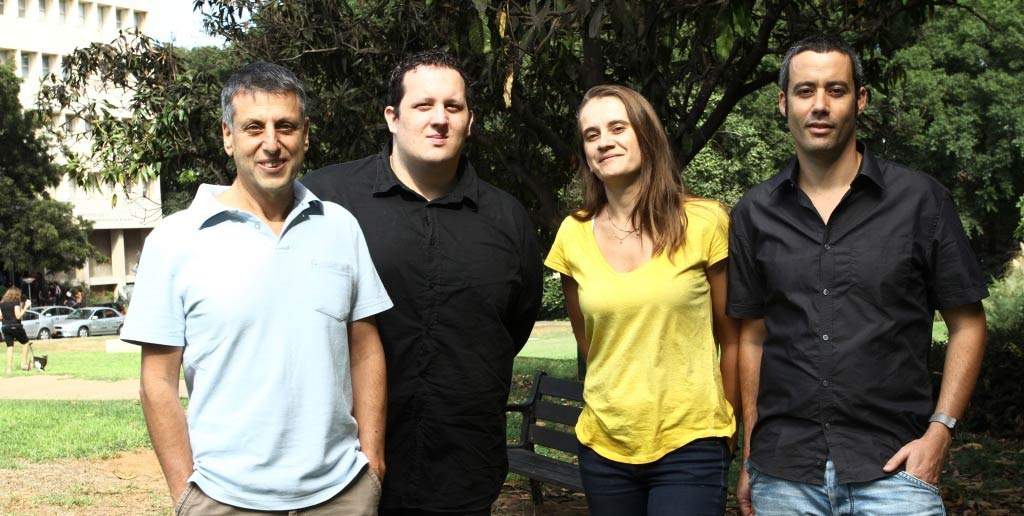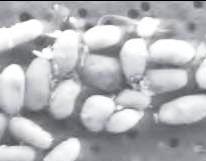Microorganisms living in environments that are naturally rich in the arsenic-based compound arsenate face a unique challenge: How to take up the phosphate compounds they need to live, while avoiding the toxic arsenate?
Chemically, arsenate is nearly indistinguishable from phosphate. “However,” says
Prof. Dan Tawfik of the Biological Chemistry Department, “phosphate forms highly stable bonds in DNA and other key biological compounds, whereas bonds to arsenate are quickly broken. So how does a microorganism surrounded by arsenate distinguish between two molecules that are almost the same size and have identical shapes and ionic properties?”
Tawfik, postdoctoral fellow Dr. Mikael Elias, Ph.D. student Alon Wellner and lab assistant Korina Goldin, in collaboration with Tobias Erb and Julia Vorholt of ETH Zurich, looked at a protein in bacteria that takes up phosphate. PBP (short for phosphate binding protein) sits near the bacteria’s outer membrane, where it latches onto phosphates and passes them on to pumps that transport them into the cell.
In
research that recently appeared in
Nature, the team compared the activity of several different PBPs – some, from bacteria such as
E. coli that are sensitive to arsenate and others, such as those from an arsenic-rich environment that are tolerant of the chemical. While the PBPs in the ordinary bacterium were about 500 times more likely to bind phosphate than arsenate, in the arsenic-tolerant bacterium that factor jumped to around 5000. In other words, to cope with their toxic environment, the bacteria evolved a mechanism of extreme selectivity to ensure their supply of phosphate while keeping the arsenate out.
Elias then compared phosphate and arsenate binding by crystallizing PBPs along with one of the two compounds. But the initial comparison suggested that when arsenate bound to the protein, it did so in just the same way as phosphate. Elias suspected that the key might lie in a single, highly unusual bond between a hydrogen atom in the protein and the molecule.
To see the difference, the team had to stretch the limits of crystallization technology, getting the resolution to less than one angstrom – fine enough to identify individual hydrogen atoms and compare their bonds. Only then were they able to identify a single disparity: The angles of that unusual hydrogen bond were different. Inside a tight cavity within the PBP structure, phosphate binds at a “textbook angle,” according to Elias. The slightly larger arsenate molecule, on the other hand, gets pushed up against the hydrogen and bonds at an unnatural, distorted angle. That angle is likely to lead to repulsion between the molecule and other atoms in the cavity, preventing the PBP from passing arsenate into the cell’s interior.
Tawfik: “This first observation of a PBP discrimination mechanism is an exciting demonstration of the exquisite fine-tuning that enables proteins to distinguish between two nearly identical molecules.”
Prof. Dan Tawfik's research is supported by the Adelis Foundation; and the estate of Mark Scher. Prof. Tawfik is the incumbent of the Nella and Leon Benoziyo Professorial Chair.

